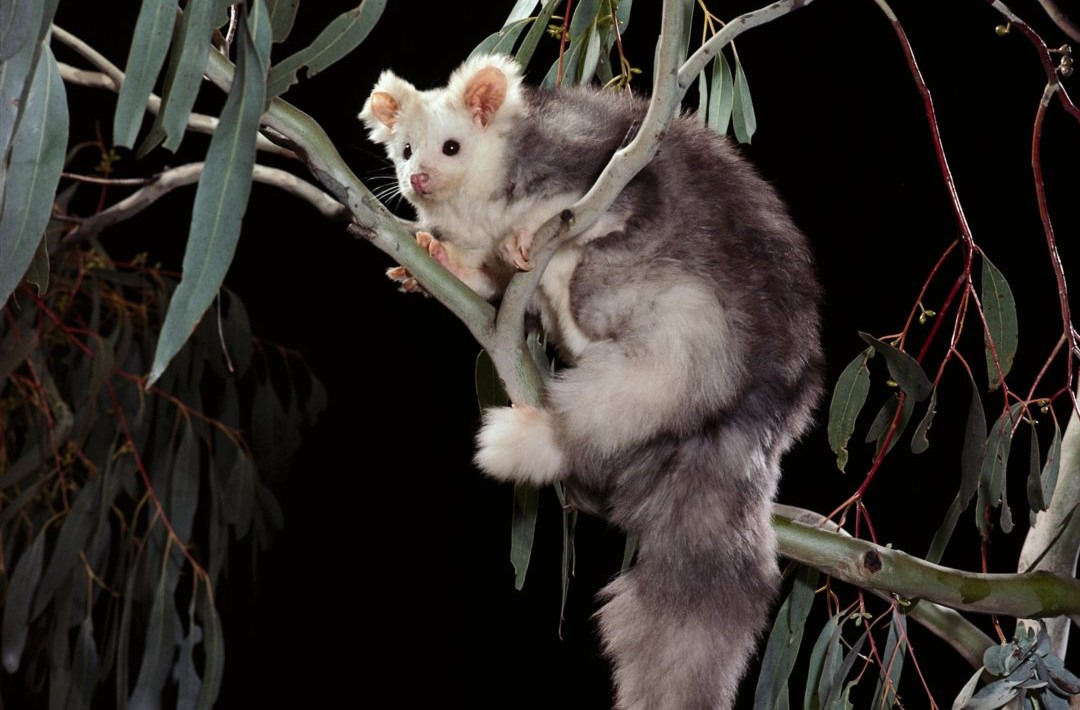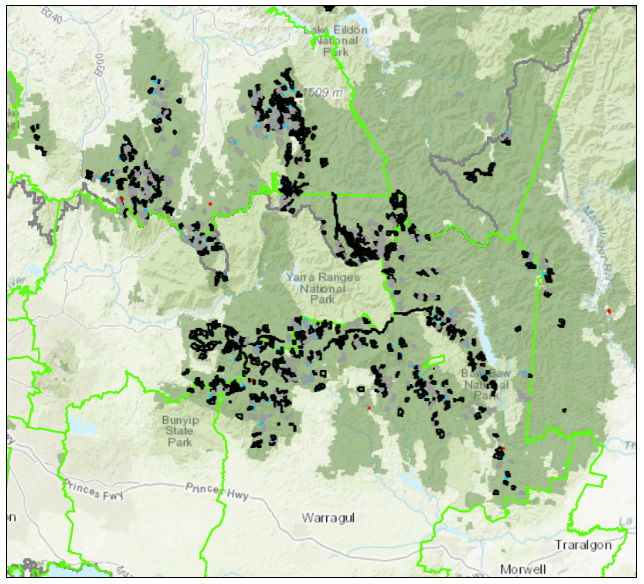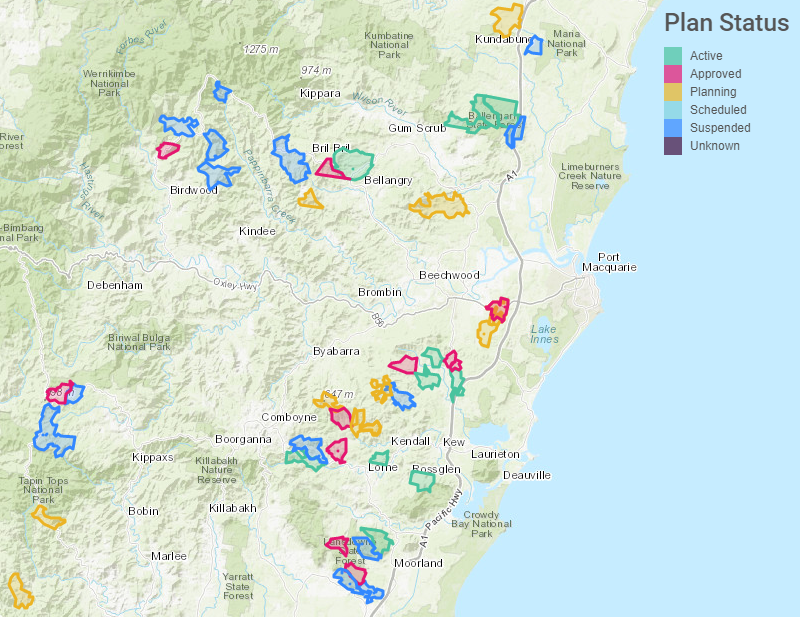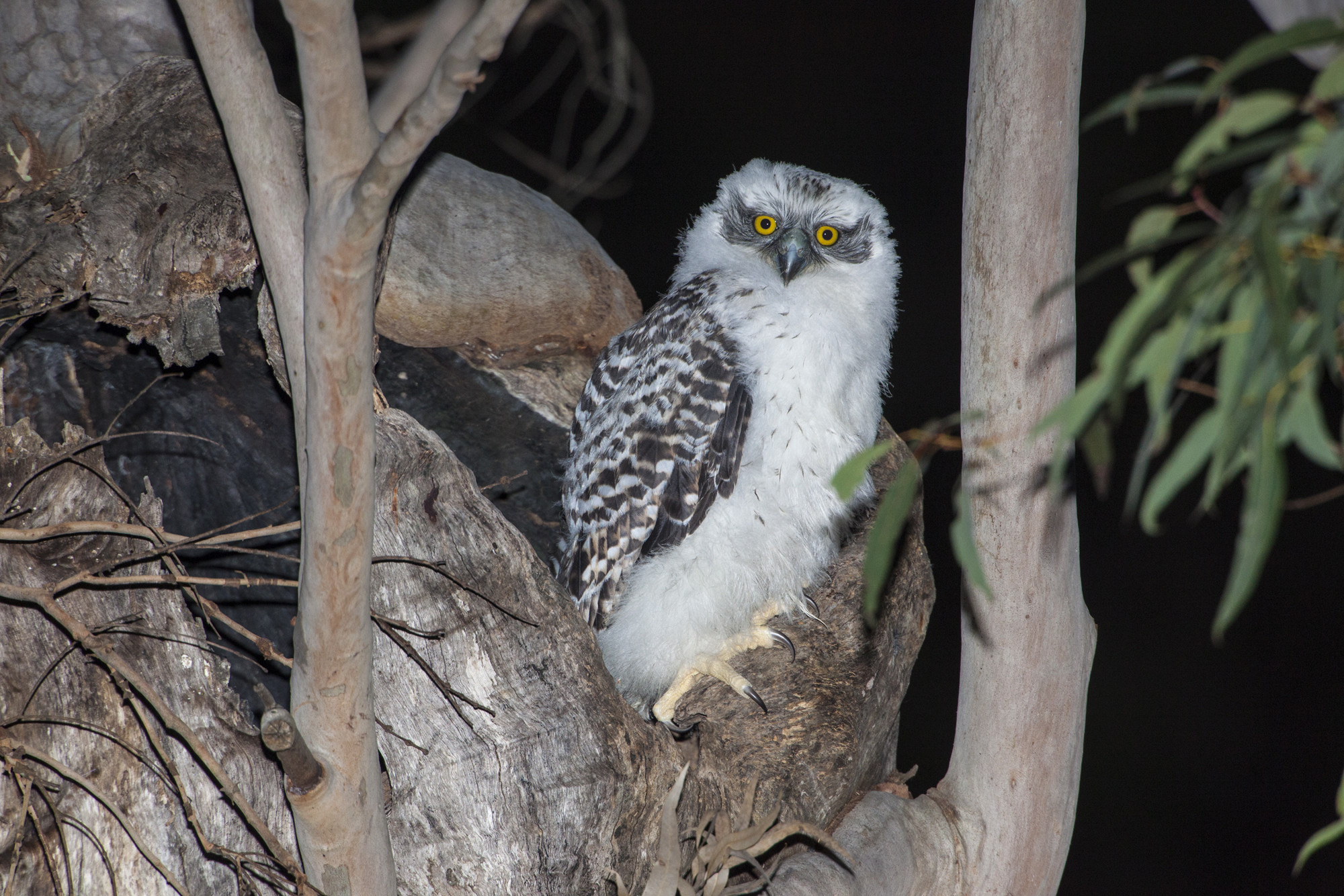News - 09 May 2019
Greater Glider (NSW/Vic)

Petauroides Volans volans
Conservation status: VULNERABLE (EPBC Act) Uplisted since RFA commencement? YES; in 2016 (from unlisted to ‘Vulnerable’) EPBC recovery plan? NO; there is a ‘Conservation advice’ only |
- Greater Gliders, Australia’s largest gliding possum, were once abundant along the east coast, but populations have crashed 80% in the last 20 years due to logging, land clearing, and the rising threat of bushfires linked to climate change.
Threats
“Habitat loss (through clearing, clearfell logging and the destruction of senescent trees due to prescribed burning) and fragmentation. Consequence rating: Catastrophic. Prime habitat coincides largely with areas suitable for logging; the species is highly dependent on forest connectivity and large mature trees… There is a progressive decline in numbers of hollow-bearing trees in production forests as logging rotations become shorter and as dead stags collapse (Ross 1999; Ball et al., 1999; Lindenmayer et al., 2011).”
Source: Threatened Species Scientific Committee
NSW: The Greater Glider is recognised nationally as Vulnerable, though not in NSW. There is no recovery plan, just a 2016 Conservation Advice that identifies logging as the most significant threat and the need to ‘Constrain impacts of hardwood production through appropriate levels of patch and hollow-bearing tree retention, appropriate rotation cycles, and retention of wildlife corridors between patches’. There has been no attempt to comply with this and, as also required by the Conservation Advice, there has been no monitoring to determine the numbers of hollow-bearing trees that need to be retained, or the effects of logging and burning on retained trees and Glider populations. The NSW Government is intending to remove logging restrictions on Glider habitat (Pugh, D. 2018).
Victoria: "Timber harvesting [logging] in Greater Glider habitat has been proven to cause declines and or local extinctions of Greater Glider populations. [It] reduces the number of hollow bearing trees available for denning by tree removal or as a result of regeneration burns after logging… Although the animals may not die from the initial impact they will die shortly afterwards… Considering the known impacts of timber harvesting on Greater Gliders, it is likely that other local extinctions of the species have already occurred and will continue to occur in the future. (Victorian Scientific Advisory Committee (SAC), 2017)"
Despite the clear and unequivocal advice from the SAC, the Minister has still not released an Action Statement for the species since adding it to the Victorian threatened species list, as is required by law. A 2017 government report on Greater Gliders in the Strathbogie Forest found that:
- The Strathbogie Forest supports a large and regionally important population of Greater Gliders;
- The Greater Glider population in the Strathbogie Forest has not suffered the declines that have occurred in the Central Highlands and East Gippsland;
- Government data shows that many parts of the Strathbogie Forest support Glider numbers that exceed the ‘high-density threshold’ that would lead to forest protection in other parts of the state.
Nevertheless, logging continues in the Strathbogie forest. Elsewhere in the state, VicForests is conducting a logging experiment, knowing that the operations will kill Greater Gliders.


Full logging plan maps: NSW; Vic
Next: Large Forest Owls (NSW/Tas/Vic)

Our forest wildlife in crisis: Powerful Owls, Sooty Owls and Masked Owls are considered sensitive to logging and habitat disturbance.